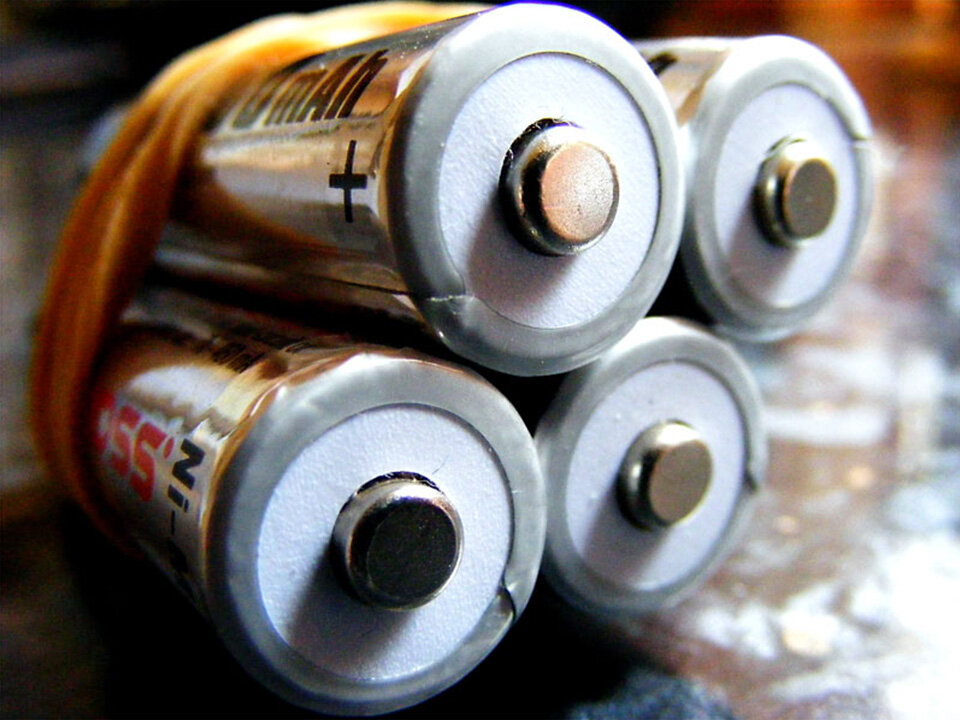2024.04.02 Tuesday
New Materials Discovered for Safe, High-Performance Solid-State Lithium-Ion Batteries
Scientists have discovered a stable and highly conductive lithium-ion conductor for use as solid electrolytes for solid-state lithium-ion batteries.

All-solid-state lithium-ion (Li-ion) batteries with solid electrolytes are non-flammable and have higher energy density and transference numbers than those with liquid electrolytes. They are expected to take a share of the market for conventional liquid electrolyte Li-ion batteries, such as electric vehicles. However, despite these advantages, solid electrolytes have lower Li-ion conductivity and pose challenges in achieving adequate electrode-solid electrolyte contact. While sulfide-based solid electrolytes are conductive, they react with moisture to form toxic hydrogen disulfide. Therefore, there's a need for non-sulfide solid electrolytes that are both conductive and stable in air to make safe, high-performance, and fast-charging solid-state Li-ion batteries.
In a recent study published in Chemistry of Materials on 28 March 2024, a research team led by Professor Kenjiro Fujimoto, Professor Akihisa Aimi from Tokyo University of Science, and Dr. Shuhei Yoshida from DENSO CORPORATION, discovered a stable and highly conductive Li-ion conductor in the form of a pyrochlore-type oxyfluoride.
According to Prof. Fujimoto, "Making all-solid-state lithium-ion secondary batteries has been a long-held dream of many battery researchers. We have discovered an oxide solid electrolyte that is a key component of all-solid-state lithium-ion batteries, which have both high energy density and safety. In addition to being stable in air, the material exhibits higher ionic conductivity than previously reported oxide solid electrolytes."
The pyrochlore-type oxyfluoride studied in this work can be denoted as Li2-xLa(1+x)/3M2O6F (M = Nb, Ta). It underwent structural and compositional analysis using various techniques, including X-ray diffraction, Rietveld analysis, inductively coupled plasma optical emission spectrometry, and selected-area electron diffraction. Specifically, Li1.25La0.58Nb2O6F was developed, demonstrating a bulk ionic conductivity of 7.0 mS cm⁻¹ and a total ionic conductivity of 3.9 mS cm⁻¹ at room temperature. It was found to be higher than the lithium-ion conductivity of known oxide solid electrolytes. The activation energy of ionic conduction of this material is extremely low, and the ionic conductivity of this material at low temperature is one of the highest among known solid electrolytes, including sulfide-based materials.
Exactly, even at –10°C, the new material has the same conductivity as conventional oxide-based solid electrolytes at room temperature. Furthermore, since conductivity above 100 °C has also been verified, the operating range of this solid electrolyte is –10 °C to 100 °C. Conventional lithium-ion batteries cannot be used at temperatures below freezing. Therefore, the operating conditions of lithium-ion batteries for commonly used mobile phones are 0 °C to 45 °C.
The Li-ion conduction mechanism in this material was investigated. The conduction path of pyrochlore-type structure cover the F ions located in the tunnels created by MO6 octahedra. The conduction mechanism is the sequential movement of Li-ions while changing bonds with F ions. Li ions move to the nearest Li position always passing through metastable positions. Immobile La3+ bonded to F ion inhibits the Li-ion conduction by blocking the conduction path and vanishing the surrounding metastable positions.
Unlike existing lithium-ion secondary batteries, oxide-based all solid-state batteries have no risk of electrolyte leakage due to damage and no risk of toxic gas generation as with sulfide-based batteries. Therefore, this new innovation is anticipated to lead future research. "The newly discovered material is safe and exhibits higher ionic conductivity than previously reported oxide-based solid electrolytes. The application of this material is promising for the development of revolutionary batteries that can operate in a wide range of temperatures, from low to high," envisions Prof. Fujimoto. "We believe that the performance required for the application of solid electrolytes for electric vehicles is satisfied."
Notably, the new material is highly stable and will not ignite if damaged. It is suitable for airplanes and other places where safety is critical. It is also suitable for high-capacity applications, such as electric vehicles, because it can be used under high temperatures and supports rapid recharging. Moreover, it is also a promising material for miniaturization of batteries, home appliances, and medical devices.
In summary, researchers have not only discovered a Li-ion conductor with high conductivity and air stability but also introduced a new type of superionic conductor with a pyrochlore-type oxyfluoride. Exploring the local structure around lithium, their dynamic changes during conduction, and their potential as solid electrolytes for all-solid-state batteries are important areas for future research!

Image title: Advancing the future of high-energy lithium-ion batteries
Image caption: Researchers have discovered a pyrochlore-type oxyfluoride as a stable, lithium-ion conductor with excellent conductivity, suitable for use as solid electrolytes in all-solid-state lithium-ion batteries.
Image credit: scalespeeder from Openverse https://openverse.org/image/c36ddc53-7809-49c4-9ec6-b701163ff100
License type: CC BY 2.0
Usage restrictions: You are free to share and adapt the material in any medium or format for any purpose, even commercially. You must also give appropriate credit and provide a link to the license, and indicate if changes were made.
Reference
| Title of original paper | : | High Li-ion conductivity in pyrochlore-type solid electrolyte Li2-xLa(1+x)/3M2O6F (M = Nb, Ta) |
| Journal | : | Chemistry of Materials |
| DOI | : | 10.1021/acs.chemmater.3c03288 |
About The Tokyo University of Science
Tokyo University of Science (TUS) is a well-known and respected university, and the largest science-specialized private research university in Japan, with four campuses in central Tokyo and its suburbs and in Hokkaido. Established in 1881, the university has continually contributed to Japan's development in science through inculcating the love for science in researchers, technicians, and educators.
With a mission of "Creating science and technology for the harmonious development of nature, human beings, and society," TUS has undertaken a wide range of research from basic to applied science. TUS has embraced a multidisciplinary approach to research and undertaken intensive study in some of today's most vital fields. TUS is a meritocracy where the best in science is recognized and nurtured. It is the only private university in Japan that has produced a Nobel Prize winner and the only private university in Asia to produce Nobel Prize winners within the natural sciences field.
■
Tokyo University of Science(About TUS)

About Professor Kenjiro Fujimoto
from Tokyo University of Science
Dr. Kenjiro Fujimoto is a Professor at Tokyo University of Science's Faculty of Science and Technology, Department of Pure and Applied Chemistry. He received his Ph.D. in 2001 from Tokyo University of Science. His research interests include Inorganic Materials Chemistry, Solid State Chemistry, Combinatorial Technology, and Materials Informatics. He has over 98 referred papers and 14 Japan patents and two U.S.A patents in these subjects. He is currently involved in the development of combinatorial technology for high-throughput exploration of multi-component inorganic materials and their application for energy/environmental materials and materials informatics.
Laboratory website 
Official TUS website 
Funding information
No funding source supports this research.

